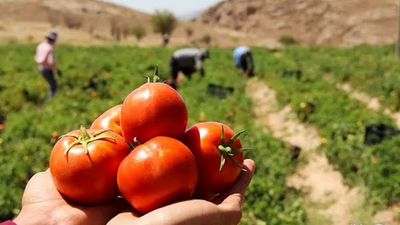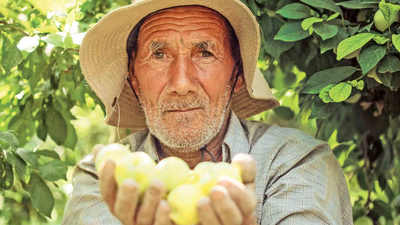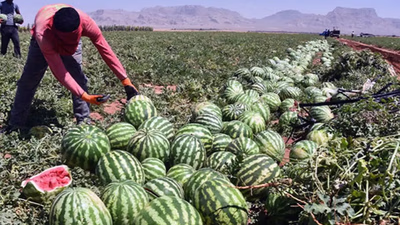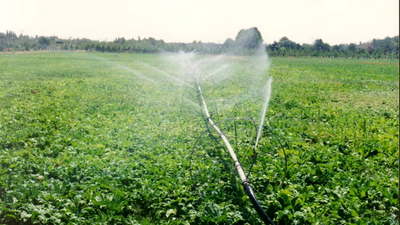
Agricultural products like vegetables and fishery goods thrive in trade.
Agriculture is one of the oldest occupations and includes growing plants and raising animals to meet human needs such as food, shelter, clothing, and medicine. Before the development of agriculture, humans had to hunt and gather crops. Once people learned how to domesticate livestock and how to grow crops, they were able to create settled societies. Thanks to agriculture, people could even experience a surplus of crops, and this surplus allowed some people to take up non-agricultural jobs.
Crop Production, involves the cultivation of various crops, such as grains (wheat, rice, corn), fruits, vegetables, oilseeds, fibers (cotton), and other plants. Crop production includes activities like land preparation, planting, irrigation, fertilization, pest control, and harvesting. Livestock Farming, sector involves the rearing of animals for meat, dairy products, eggs, and other byproducts. It includes raising cattle, poultry (chickens, turkeys), pigs, sheep, goats, and other livestock. Livestock farming focuses on breeding, feeding, health management, and animal welfare.
Fisheries and Aquaculture sector is dedicated to the cultivation of fish and other aquatic organisms. It involves activities like fish farming, fish hatcheries, fish processing, and the cultivation of shellfish and aquatic plants. Fisheries and aquaculture contribute to the production of seafood and play a significant role in meeting global protein demands. Agri-inputs, refers to the production and supply of agricultural inputs such as seeds, fertilizers, pesticides, and machinery. Companies in this sector develop and distribute improved crop varieties, hybrid seeds, and genetically modified organisms (GMOs). They also provide fertilizers, pesticides, herbicides, and machinery for farming operations.
From the historical past until today, the field of agriculture has always been one of the most important needs of mankind to continue its presence on this planet. From the time of ancient times to the time when it is called the era of information explosion, man has traveled the path of growth and dynamism by relying on the advantages that the agricultural sector has created for him. This necessity (development of the agricultural sector) will continue in the future perspective with much more importance.
Examining the process of economic development in different parts of the world over time indicates that the developed countries, relying on their relative advantages, have been able to make the best use of their domestic economic capacities as well as the opportunities available in the international arena. and follow the path of growth, development, increase in per capita income and improvement of other development indicators at the same time. . This caused an increase in population and trade with other societies, which led to the emergence of cities.
Agriculture industry includes statistics, facts and market data in the main sectors of agriculture, forestry, fisheries and aquaculture. Examining the historical trend of the economic development of the countries shows that most of the developed countries in the world today have chosen agriculture as the basic sector of their economic development and by using the many capacities of this sector, they have been able to provide suitable inputs for The growth of other sectors will also achieve the development of other sectors.
The agricultural sector plays many roles in the process of economic growth and development of different countries, among the most important of which are the supply of raw and basic materials needed by upstream industries, supply of inputs such as labor, and consumption of other products. He mentioned industrial sectors such as fertilizers and chemical poisons and agricultural machinery, earning currency for the country and financing other infrastructure sectors.
After harvest, agricultural products undergo processing and value addition to enhance their market value and improve their shelf life. This includes activities like cleaning, sorting, grading, packaging, preserving, and transforming raw agricultural produce into processed goods. Examples include milling grains, canning fruits and vegetables, and producing dairy products. The agricultural industry relies on an efficient supply chain to transport products from farms to consumers. This involves logistics, storage, transportation, and distribution networks that connect farmers, processors, wholesalers, retailers, and consumers. Efficient supply chains ensure timely delivery of fresh produce and minimize post-harvest losses.
Agricultural Technology, Advancements in agricultural technology have transformed the industry, leading to increased productivity and efficiency. Technologies such as precision farming, hydroponics, genetically modified crops, drones, and automated machinery have revolutionized various aspects of agricultural production, improving yields and resource management. With growing concerns about environmental impact and sustainability, the agricultural industry is increasingly focusing on sustainable practices. This includes implementing organic farming techniques, reducing chemical inputs, conserving water resources, adopting precision farming to optimize resource utilization, and promoting biodiversity conservation.
The agricultural industry is highly influenced by global trade and markets. International trade agreements, tariffs, subsidies, and market demands impact agricultural production, pricing, and export/import patterns. Agricultural economies heavily rely on export opportunities and compete in global commodity markets. Governments play a crucial role in shaping agricultural policies, regulations, and subsidies to support the industry, ensure food safety, and promote sustainable practices. Policies may focus on issues such as land tenure, water rights, farm subsidies, research and development funding, and environmental regulations.



